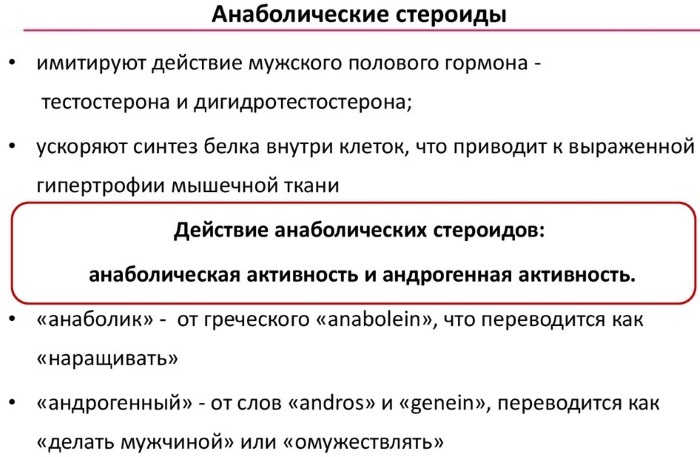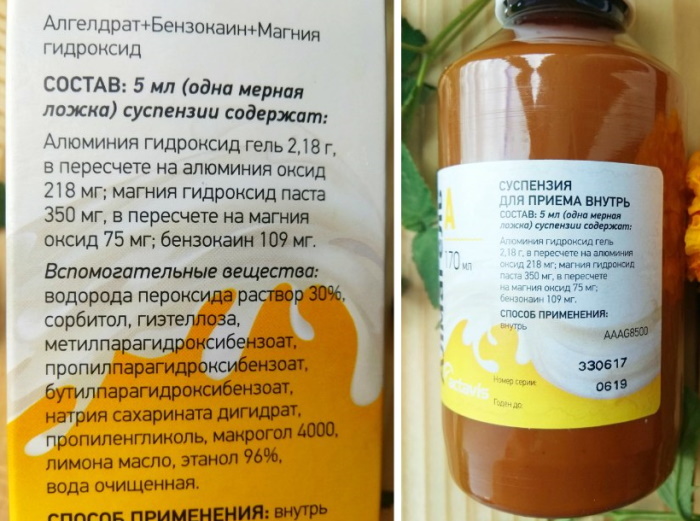Content
- The chemical composition of the vegetable
- Carbohydrates
- Fats
- Protein
- Vitamins and minerals
- Beneficial effect on the body
- Increased endurance
- Lower blood pressure
- Improving cognitive performance
- How to raise hemoglobin with beets
- In what form to use beets
- Raw
- Heat treatment
- Pickling
- Fermentation
- In the form of juice
- Rules for the use of beets
- How to eat beets
- How long to take beets to increase hemoglobin
- Video products for hemoglobin
Eating beets is considered one of the best ways increase the level of hemoglobin in the blood, because it contains not only a lot of iron, but also folic acid, potassium and fiber. This root vegetable promotes the recovery and reactivation of red blood cells in the body, which further increases the supply of oxygen to all parts of the body.
The chemical composition of the vegetable
Beetroot is a plant related to chard and spinach. But, unlike them, they eat not only greens, but also root crops. These 2 edible parts of beets have different nutritional value and chemical composition. For example, leafy greens are considered non-starchy and low-carb, while root vegetables are higher in starch and carbohydrates, as well as fiber. There are some differences in the vitamins and minerals contained in the product.
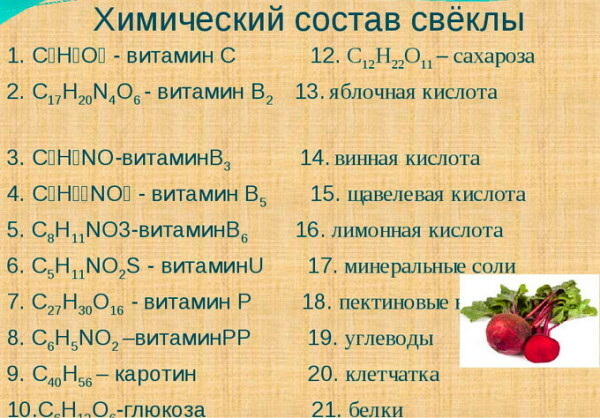
| Elements of chemical composition | Content in 100 g of raw beets (root crops) | Content in 100 g of raw beet greens |
| Calories | 43,0 | 22,0 |
| From carbohydrates | 37,1 | 15,5 |
| From fats | 1,4 | 1,1 |
| Protein | 4,5 | 5,4 |
| Carbohydrates | 9.6 g | 4.3 g |
| Alimentary fiber | 2.8 g | 3.7 g |
| Starch | 0.0 g | 0.0 g |
| Sugar | 6,8 g | 0.5 g |
| Fats | 0.2 g | 0.1 g |
| Saturated fat | 0.0 g | 0.0 g |
| Monounsaturated | 0.0 g | 0.0 g |
| Polyunsaturated | 0.1 g | 0.0 g |
| Omega-3 fatty acids | 5.0 mg | 4.0 mg |
| Omega-6 | 55.0 mg | 41.0 mg |
| Protein | 1.6 g | 2.2 g |
| Vitamins | ||
| BUT | 33.0 IU | 6326.0 IU |
| C | 4.9 mg | 30.0 mg |
| E (alpha-tocopherol) | 0.0 mg | 1.5 mg |
| TO | 0.2 μg | 400 mcg |
| Thiamine | 0.0 mg | 0.1 mg |
| Riboflavin | 0.0 mg | 0.2 mg |
| Niacin | 0.3 mg | 0,4 mg |
| B6 | 0.1 mg | 0.1 mg |
| Folic acid | 109 μg | 15.0 μg |
| B12 | 0.0 mcg | 0.0 mcg |
| Pantothenic acid | 0.2 mg | 0.3 mg |
| Choline | 6.0 mg | 0,4 mg |
| Betaine | 129mg | 0.0 g |
| Minerals | ||
| Calcium | 16.0 mg | 117 mg |
| Iron | 0.8 mg | 2.6 mg |
| Magnesium | 23.0 mg | 70.0 mg |
| Phosphorus | 40.0 mg | 41.0 mg |
| Potassium | 325 mg | 762 mg |
| Sodium | 78.0 mg | 226 mg |
| Zinc | 0,4 mg | 0,4 mg |
| Copper | 0.1 mg | 0.2 mg |
| Manganese | 0.3 mg | 0,4 mg |
| Selenium | 0.7 μg | 0.9 mcg |
| Sterols | ||
| Cholesterol | 0.0 mg | 0.0 mg |
| Phytosterols | 25.0 mg | 21.0 mg |
| Water | 87.6 g | 91.0 g |
| Caffeine | 0.0 mg | 0.0 mg |
| Theobromine | 0.0 mg | 0.0 mg |
Carbohydrates
A glass of raw beets contains about the same amount of calories and carbohydrates as one serving of fruit. Therefore, when observing a low-carb diet, you need to keep this in mind. The carbohydrates in beets are formed from both natural sugar and dietary fiber. Fiber helps regulate sugar levels in the body, increases feelings of fullness, and helps lower cholesterol.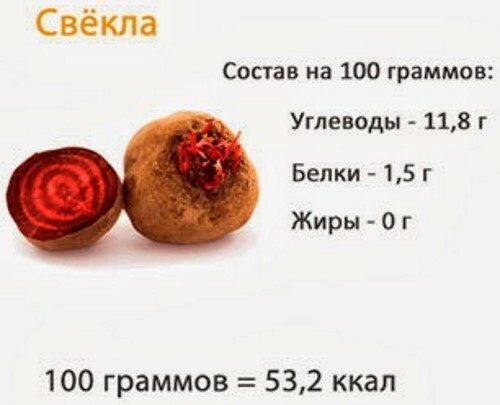
The root vegetable has an estimated glycemic index of 64, making it a high GI product. However, the glycemic load (which varies by serving size) is only 4 units.
Fats
There is almost no fat in a standard serving of beets. A small amount is polyunsaturated fat, which is considered healthy. But keep in mind that some cooking methods can increase the fat content of the beets. For example, frying it in vegetable oil will increase the amount of fat per serving.
Protein
Beetroot is not a high protein food, but it does contain few beneficial amino acids. Each serving of root vegetables contains approximately 1.6 g of protein.
Vitamins and minerals
Beets are a very good source of folate and manganese, as well as potassium and fiber. Folate is important for DNA synthesis and prevention of neural tube defects during pregnancy, and manganese is a component of antioxidant enzymes and helps break down glucose and proteins. Potassium helps lower blood pressure, and fiber is important for digestive health.
Beets are an excellent food for hemoglobin in the blood, as they are a good source of iron and vitamin C (which promotes the accumulation of iron in the body). Ascorbic acid also regenerates and reactivates red blood cells and helps oxygenate the body.
One serving of beetroot slices contains 6% of the RDI for iron and 37% for folate. Iron helps to strengthen the hemoglobin in red blood cells, which carry oxygen throughout the body.
Beet leaves are rich in vitamins B6 and K, iron, magnesium, potassium, copper, manganese and antioxidants. They have the same nutritional value as other dark green leafy vegetables such as Swiss chard and spinach: they are very low in carbohydrates and high in beneficial vitamins and minerals.
Beneficial effect on the body
Beets have become popular all over the world not only for their pleasant sweet taste, but also for their positive effects on the body. The useful properties of the vegetable are as follows.
Increased endurance
Studies have shown that people who drink beet juice before exercise can exercise for longer, showing increased cardiorespiratory endurance (vigorous exercise).
Lower blood pressure
Beets contain nitrates, which increase nitric oxide levels in the body. This gas (produced naturally in the body) causes the blood vessels to dilate, increasing blood flow and lowering blood pressure.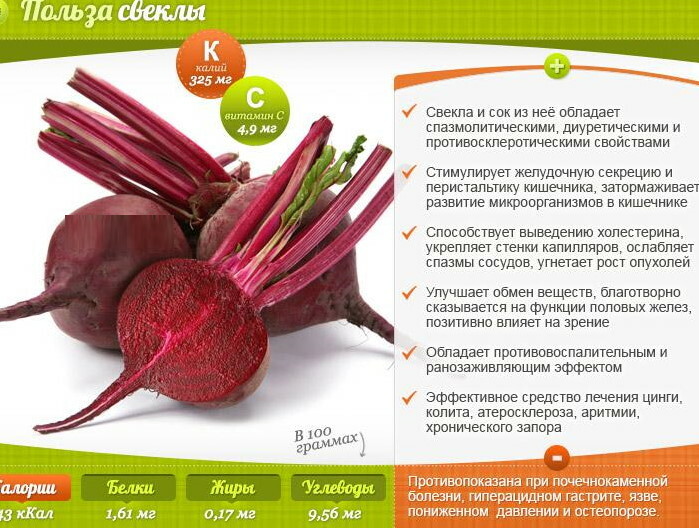
Experiments have shown that drinking just 1 cup of beetroot juice (or equivalent the amount of root pulp) can reduce systolic blood pressure by significant 4-5 mm Hg Art. This feature makes beets an effective product for the prevention and treatment of certain cardiovascular diseases.
Improving cognitive performance
A study of groups of older adults found that a diet high in nitrates also helps improve blood flow to the brain, improving brain function and cognitive health. Another experiment found an increase in reaction rate (a measure of cognitive ability) in people who drank beet juice daily.
How to raise hemoglobin with beets
Beetroot is very effective for hemoglobin in the blood, because it contains a lot of iron, which helps in the recovery and reactivation of red blood cells. Once the red blood cells are activated, the oxygen supply to all parts of the body is increased. Adding beets in any form to your daily diet will help you easily fight low hemoglobin and anemia.
People with anemia often experience dizziness, fatigue, headaches, heart palpitations, shortness of breath, and lack of appetite. The vitamins and minerals in beets and beet leaves help to improve your well-being.
The most effective way to use beets to increase hemoglobin is to juice them. You can combine beets and carrots to naturally boost iron levels, or add oranges for a vitamin C-rich drink.
In what form to use beets
Beets have a pronounced earthy taste that not all people like. Therefore, there are many ways to prepare it that improve the taste.
Raw
This is one of the most common ways to eat beets. To make it tasty, you should choose small and medium-sized root vegetables. Some beet varieties can become tough and overly fibrous when they grow large (so bigger is not better).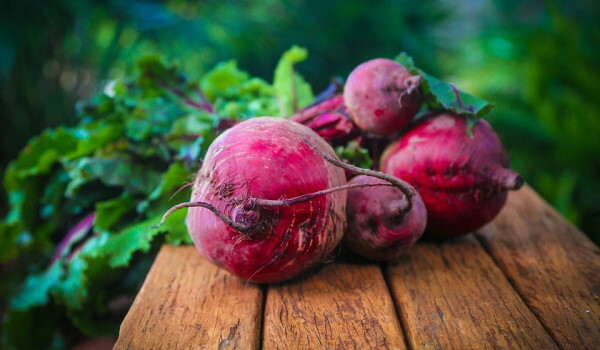
The vegetable should have a uniform appearance (no spots) and a deep color. Yellow beets should be a warm orange-reddish color, while red beets should be a deep ruby hue. If the root vegetable has large dark spots or "runs out" of juice - do not eat it.
Raw beets are not difficult to prepare - they need to be washed and chopped before serving. Some people prefer to peel it, but this is not necessary if the roots are young and tender. It is enough to wipe them dry with a paper towel before cutting.
Heat treatment
Beets can be cooked in a variety of ways: boil, bake, or steam them. This may slightly alter its nutrient content, but the vegetable will still be beneficial for raising hemoglobin in the blood. Moreover, cooking beets in some cases can even increase their antioxidant properties.
Different cooking methods look like this:
- Baking in the oven - a method that allows you to best reveal the natural sweetness of a vegetable (due to the content natural sugars) to help soften its earthy flavor while maintaining maximum nutritional substances. The baked root vegetable can then be added to many dishes and mixed with any flavoring.
- Cooking - is the fastest cooking method for beets. It is best to cook whole root vegetables so that they retain their color. The main disadvantage of this method is that some water-soluble nutrients are lost during the cooking process.
- Cooking in a double boiler - suitable for small to medium sized vegetables. Root vegetables are peeled and cooked whole. With this method of cooking beets, less nutrients are lost, but their texture will not be as soft and tender as when boiling or baking.
Pickling
Pickled or canned beets are a common ingredient in salads and snacks. This cooking process uses a little sugar and vinegar to correct the vegetable's earthy flavor profile. The result is a brighter and more balanced taste.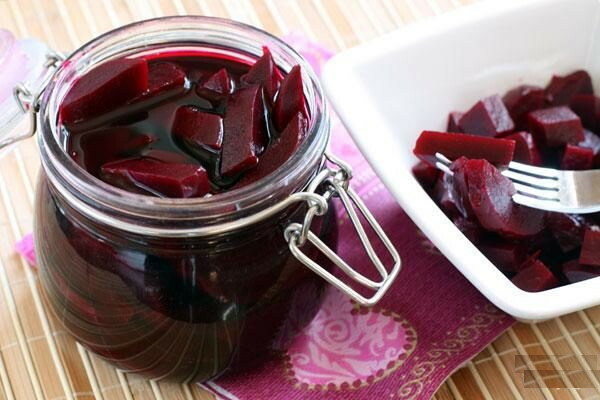
The type of vinegar used can be anything. Pickled beetroot recipes usually require the addition of apple cider, sweet and sour wine, or even tarragon vinegar. Therefore, you should not be afraid to experiment to find your favorite option.
For pickling, cut baked or boiled beets into thin slices, pour hot vinegar mixture and place in the refrigerator for several days before serving. Shorter cooking times will result in a crisper texture, longer cooking times will soften the vegetable.
Fermentation
Fermented beets are less well known, but they are very healthy. In this form, the root vegetable has probiotic properties. Fermented beets are good for gut health, contain beneficial bacteria, and even boost immune system function. While the beetroot fermentation process can be a little odd, the health benefits are well worth the effort.
To cook beets in this way, you need to peel and chop the raw root vegetables, and then put them in a jar. together with any seasonings to taste (most often horseradish, garlic, cardamom or rosemary are added) and pour over with brine. Fermentation is different from pickling because it eliminates both heat treatment and the addition of vinegar. Beets can ferment for 3 to 12 days before being refrigerated.
In the form of juice
Beetroot for hemoglobin in the blood is often recommended in the form of juice. Since the vegetable has a natural sweetness, the drink is delicious without the addition of preservatives or sugar.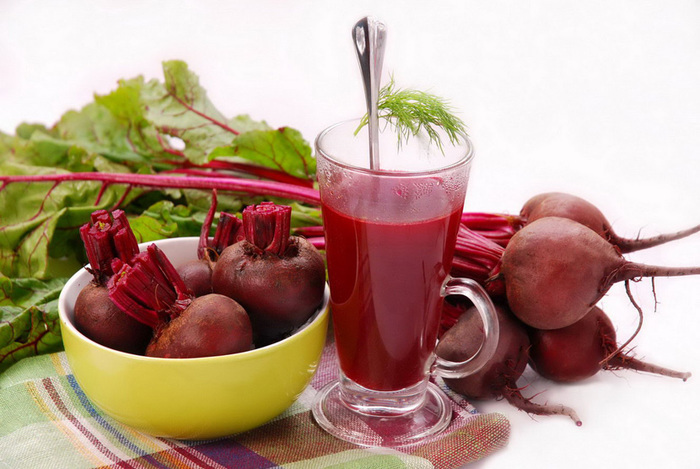
To make beetroot juice, you must:
- Select 2-3 medium beets and wash thoroughly.
- Then peel, cut into cubes, place in a blender and beat on high speed.
- The resulting drink is recommended to be poured into a glass and drunk without adding sweeteners.
- To make this juice healthier, you can add carrots, apples, or other fruits and vegetables of your choice and try a variety of options.
Rules for the use of beets
Beets are versatile and can be cooked in many different ways.
For any cooking method, the following rules should be observed:
- For boiling, steaming, or baking, it is best to choose root vegetables that are about the same size so that they cook at the same time.
- The peel is much easier to remove after cooking.
- Before baking, you can pre-peel the root vegetables, but you do not need to do this before cooking. The rind helps to preserve the color of the beets and vegetables cooked without them will look faded.
- Baking is the best way to cook a root vegetable. Many of the nutrients in beets (such as nitrates and vitamin C) are water soluble. During cooking, they seep from the vegetable into the broth and do not get into the food.
- Beets are quite dense and firm, so cooking can take a relatively long time. The time required for this depends on its size, but for an average root vegetable with a diameter of 5-8 cm, it takes about 45-60 minutes. for baking in the oven and about 30 min. - for boiling in water.
- To check the readiness of the beets, you need to pierce them with a fork or knife. The vegetable is ready when the tip of the kitchen appliance easily enters it 2-4 cm deep without any resistance.
The following foods go well with beets:
- Herbs: tarragon, thyme, basil, dill, cilantro and parsley.
- Condiments: cumin and curry.
- Sauces and oils: vinegar, olive oil, mustard, horseradish, capers and chili.
- Dairy products: sour cream, yogurt, goat cheese and blue cheese.
- Fruits: orange, lime, lemon and apple.
- Vegetables: onions, spinach and potatoes.
How to eat beets
To make raw beets tastier, it is recommended to pour lemon juice on them and season with black coarse or cayenne pepper. It can also be mixed with leafy greens and vegetables (carrots, peppers, tomatoes). Pickled and fermented beets are delicious in salads, cold cuts, bruschetta.
The cooked root vegetable is usually added to various meals and snacks:
-
Salads. Beets can be placed hot or cold in them. In both forms, it pairs best with salty and sweet ingredients. Spicy soft cheese (goat, feta or moldy), as well as berries, apples and oranges are especially suitable for it. It's a good idea to add walnuts or pumpkin seeds, which are great for adding crispy texture to the salad and complementing the beetroot flavor.

- Smoothie. A great way to add more nutrient-rich vegetables to your diet. One of the benefits of using beets in smoothies is that they can be mixed with ingredients that can mask their taste and smell. Berries are one of the most recommended combinations.
- Sauces. Beets mix well with soft ingredients like hummus, yogurt, or sour cream. The result is a sauce of vibrant purples, blues or pinks that can be a table decoration at the same time.
- Vegetable mixes. Most often, beets are served with other root vegetables such as carrots, potatoes, onions and turnips because they all cook in the oven in the same amount of time. But you can think outside the box and add it to any mixed vegetables. It should be remembered that beets tend to stain other ingredients, so it is advisable to place them at the very end of cooking so that the entire dish does not turn purple.
How long to take beets to increase hemoglobin
The size of the daily serving of beets to raise hemoglobin levels usually depends on the amount of beneficial nitrates in them. Their ideal content is from 6.4 to 12.8 mg per kg of root vegetable. That is, 1 cup (136 g) of beets per day is sufficient. If you use beet juice, you will need no more than 200 ml daily.
It is important to remember that correcting iron deficiency in the body will take time. You may feel better after a week of consuming beets daily, but it may take several months or more for your hemoglobin levels to rise permanently.
Video products for hemoglobin
How to quickly increase the level of hemoglobin in the blood:

